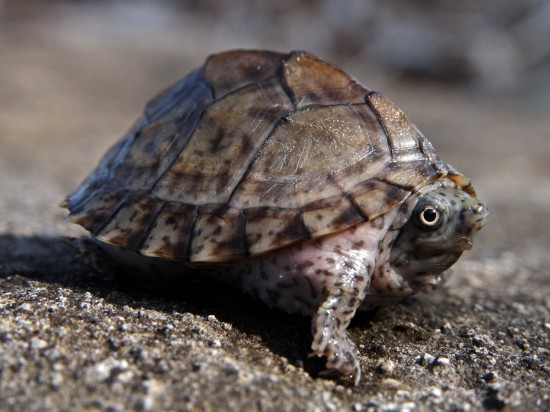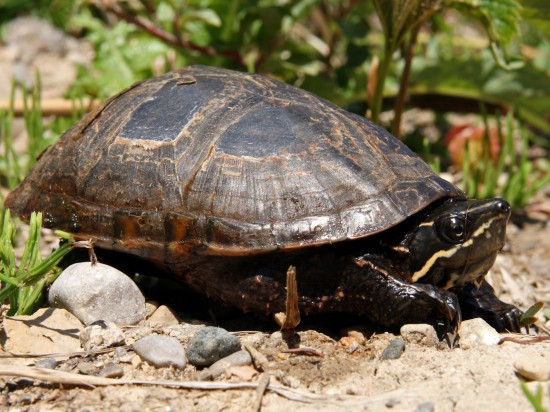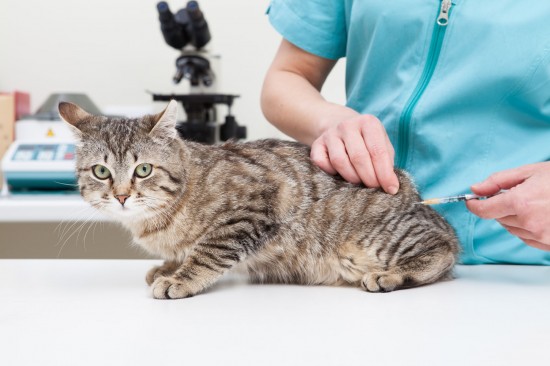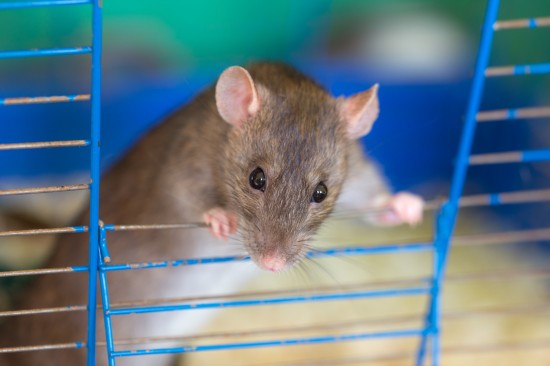


Cute little faces, an attitude similar to that of a Jack Russell Terrier and barely getting bigger than a tennis ball Musk Turtles are one of the best turtles for keeping in a tank, or indoor pond.
Belonging to the Sternotherus genus, the group of turtles commonly known as North American Musks, contains 4 species, all with natural ranges throughout North America, including parts of Canada.
Of those the Common Musk is the most readily available in pet shops, occasionally the slightly larger Razor Back Musk is seen, and private breeders in the UK and Europe occasionally have Flattened and Loggerhead Musks available.
Musks can be quite poor swimmers for an aquatic creature. So a longer but shallower tank is better than a tall one. Always provide plenty of plants (fake or real) to allow them to climb or even walk to the surface, and somewhere for them to hang out at the surface. A tank 90cm to 120cm long is a great size, often people buy a smaller tank at first and upgrade, but this just cost more in the long run. For their small size Musks can be surprisingly messy so it’s worth getting an external filter to stay on top of the waste. As with all turtles its vital you don’t have a lid on the tank, this can reduce the air flow and lead to respiratory infections, which can be fatal.
Whilst some people will say that Musks don’t bask, plenty of keepers and breeders report their Musks do bask, and researchers have observer them basking in the wild. They will often hang about in and on plants at the water’s surface, especially when younger. Therefore it’s important to provide a basking area, and if you have a female, once she’s old enough a nesting area.
As a species that eats snails in the wild, Musks are prone to eating gravel in the aquarium, which can lead to a blocked intestine, so choose sand rather than gravel, or rocks that are too big to be eaten. As they have evolved to look like a river cobble they do seem to be more confident if there are plenty of rocks in the tank. Plants are a bit hit or miss, some Musks will eat the lot, whilst others will leave well enough alone.
Since Musks are from North America they are a temperate species. Recent research in Canada shows that during the summer they seek out the warmer waters up to about 24 degrees C. whilst during the winter they live under ice. This means that your tank will be fine at room temperature, however a protected or inline heater will help stabilise the temperatures as the water volume in a tank is small compared to rivers and lakes.
Research shows that in the wild there is a reasonably high density of Musks in an occupied area. Meaning that it’s quite likely that they interact in the wild. However conventional keeping methods is that they prefer to be kept alone. The problems are that males are more likely to fight, especially if females are present, and some turtles are just antisocial and may not get along with other. Numerous senior keepers with extensive collections do co habit Musks without incident, but they normally have extra set ups where aggressive turtles can be isolated.
Common Musk turtle males are known to be a bit sexual aggressive even to members of different turtle species. So keep this in mind if you have a male.
Fish can be tricky, plenty of keepers do keep fish with their turtles with no problems. But as a temperate species you need to get fish that don’t need to be in a tropical tank. Most Musks are useless at catching fish, but that’s not to say all of them will be fish safe. It’s better to have faster moving fish as well. Goldfish might seem to be the obvious choice, but as another messy species the two together can overload the heater. Species such as Danios are great, as are White Cloud Mountain Minnows. You can adjust the temperature to be at the bottom of the range for some tropical and sub-tropical species and at the top for Musk turtles.
As with most reptiles musk turtles need a basking hot spot, 10 degree C hotter than the water, and a good quality UVB light.
Musks are mostly carnivorous they do well on a good quality pellet food, snails from a safe source, earthworms, and occasional prawns as a treat. It may be worth having floating plants such as duckweed in the tank as a source of vegetable matter, or putting dandelion leaves, red lettuce or other greens in your tank, but remember to remove them if they’re not eaten to avoid fouling the water.
A calcium source such as a cuttlefish bone sold for in bird cages should be available. If feeding snails they will often eat the shells as well as a source of calcium.
Feed daily until they are a year old and then every 2-3 days, use the size of their head as a feeding guide. Imagine that it is hollow and feed enough to fill that space.
Known as Stinkpots due to their ability to release a foul smelling odour from glands under the edge of their shell, common Musks are the smaller of the two commonly available species. Water depth can be from 30 to 60 cm deep. In the wild they occupy a wide variety of depths some reports of up to 9m deep. It’s worth noting that there have been very few reports of Musk turtles releasing their musk in a captive situation.
A much lighter turtle with a prominent keel along their shell. Getting to a slightly larger size than Common Musks they need a larger tank. Often considered the shyest of the musk turtles, if not all turtles, they need plenty of hiding spots, and prefer basking spots in the middle of the tank in the form of an island if possible, although this can be difficult to set up. A piece of bog wood breaking the surface can provide a perfect set up assuming that the turtle cannot get stuck under the wood.
Musk turtles make fantastic little pets with bags of personality, they’re a bit more complicated than fish to keep, but once you have you’re set up right then they can live a long and happy life, maybe up to 40 years. Once they get used to you they may feed from your hand and will recognise you, as the source of food if nothing else.
 What Vaccinations Should My Cat Have?
What Vaccinations
What Vaccinations Should My Cat Have?
What Vaccinations
 Rats - Does Or Bucks?
Rats - Does Or Bu
Rats - Does Or Bucks?
Rats - Does Or Bu
 dog crates for sale
There are currently two dogs in our house. I say currently s
dog crates for sale
There are currently two dogs in our house. I say currently s
 Bulldog Health Problems
Bulldog Health Pr
Bulldog Health Problems
Bulldog Health Pr
 Hereditary Health And Genetic Diversity Within The Chihuahua Dog Breed
Hereditary Health
Hereditary Health And Genetic Diversity Within The Chihuahua Dog Breed
Hereditary Health
Copyright © 2005-2016 Pet Information All Rights Reserved
Contact us: www162date@outlook.com